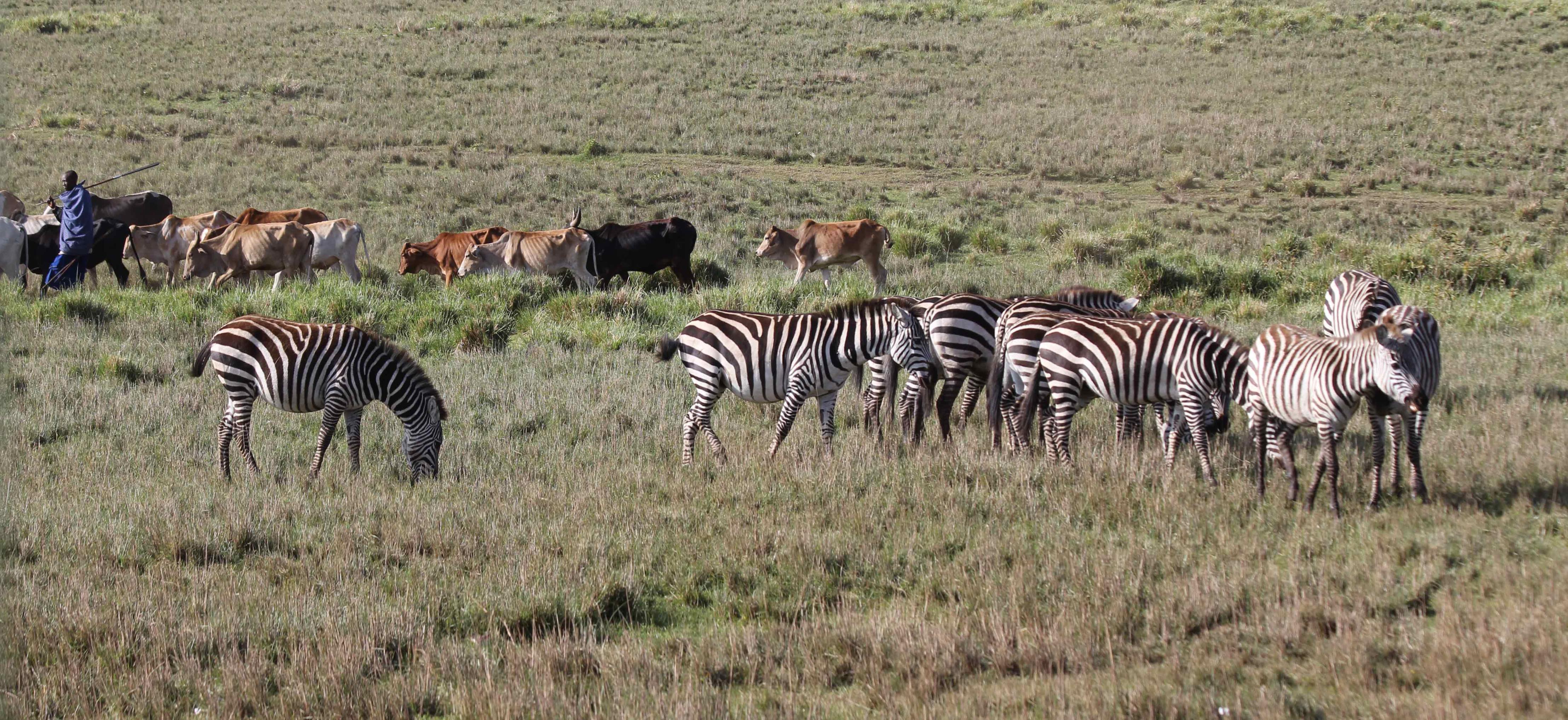Novel molecular approaches for understanding the epidemiology of endemic anthrax
Published: 17 May 2021
This research will allow for more targeted management and control of anthrax, leading to enhanced animal and human health, and improved food security and poverty alleviation through reduced production losses.

This project will be based in the Ngorongoro Conservation Area in Tanzania, East Africa. This area - rich in a variety of wildlife - is home to Maasai pastoralists who depend almost entirely on livestock for food and income. Anthrax is a major issue for both animal and human health in this area. Livestock losses occur regularly, with approximately a quarter of households reporting suspected cases in their herds over the past two years. Additionally, more than 40 cases of human anthrax - including five deaths - were seen at the regional hospital in the second half of 2016 alone. In this unique study system, I will apply novel techniques to study the genetic characteristics of bacteria obtained from affected animals and people. These analyses will allow me to determine the main sources of infection for animals and people, and how these cases are linked.
The main objective of this study is to determine how the bacterium that causes anthrax is spread and transmitted, particularly during outbreaks. This includes assessing how often transmission occurs between different host species, and identifying the main sources of risk for livestock and people. I will train a team of local human and animal health professionals to conduct in-depth case investigations. The team will collect detailed data and samples during outbreaks. This training will contribute not only to the project, but will strengthen local capacity to handle this and other animal diseases. To ensure that affected community members, health practitioners, and local and national policy makers are involved at all stages of the research, I will invite representatives from these groups to attend annual workshops that I will host. These will maximise the benefits of my research by increasing disease awareness, improving connectivity among key individuals in the community and government, and ensuring that project results are able to feed directly into policy.
The samples collected from the different host species during this project will serve as a source of bacterial DNA that can be used to track transmission, similarly to DNA fingerprinting in forensics investigations. The DNA from these various sources (e.g. livestock, wildlife and people) will be fully analysed to obtain the genome of each individual bacterium. These data will provide incredibly high-resolution information that will allow me to reconstruct chains of transmission amongst affected species, determine associations between particular strains and different host species, and understand whether individual cases may be the result of infection from multiple sources.
Planned Impact
Anthrax has major impacts on the health of livestock and people in Tanzania, particularly traditional livestock-keeping communities such as those within the project's study area in the Ngorongoro Conservation Area, where anthrax is ranked amongst the diseases of greatest concern. In addition to being a major public health issue, anthrax is highly impactful on food security and livelihoods in vulnerable communities due to the livestock losses it engenders. Through an improved understanding of the epidemiology of anthrax in endemic settings, this research will allow for more targeted management and control of anthrax, leading to enhanced animal and human health, and improved food security and poverty alleviation through reduced production losses.
Human and animal health professionals in this area will benefit from training on the surveillance and management of anthrax, including specific guidelines that will be developed during this project. An important outcome of this fellowship will thus be the strengthening of local capacity to handle anthrax and other zoonotic diseases.
The outcomes of this research will also be highly relevant to national-level policy makers in human and veterinary health. The recent inclusion of anthrax amongst the top three priority zoonoses in Tanzania demonstrates national-level concerns regarding this disease. Partners in Tanzanian government will be engaged and informed of developments and results throughout the project through annual multi-stakeholder meetings, a project website, and regular communications. These partners will ensure that the data generated by this project (i.e. on the transmission dynamics of Bacillus anthracis and the risk of different sources of infection for livestock and humans) contribute directly to policy decisions for improved anthrax prevention and management in Tanzania. The involvement and integration of key stakeholders at local and national levels and from both the animal and human health sectors will enhance connectivity and result in greater awareness and understanding of the disease.
I will work towards increasing awareness of neglected zoonotic diseases, and anthrax in particular, through several outreach initiatives including public science forums and social media.
The proposed project pushes the current state of the art in terms of available technologies and analytical techniques in bacterial genomics that will be of value for a number of academic beneficiaries. My fellowship will result in novel data and significant methodological advances that will have far-reaching significance within the fields of molecular epidemiology, microbial genomics, infectious disease ecology, and in anthrax ecology and epidemiology more specifically. Given the novelty of the study area and the genomic approaches taken, this project has the potential to result in a step-change in our understanding of the epidemiology of anthrax in endemic settings.
Certain project deliverables will also be of value in biodefence. The array of primers designed for targeted sequencing of the B. anthracis genome will be a highly relevant tool for such applications. Moreover, the sequencing data generated by this project will result in a greater appreciation of the strains of B. anthracis in circulation in Tanzania, which could be useful information for source attribution.
Overall, the project will produce high quality research and contribute to maintaining UK as a global leader in bioscience research.
First published: 17 May 2021
UofG - School of Biodiversity, One Health & Veterinary Medicine

